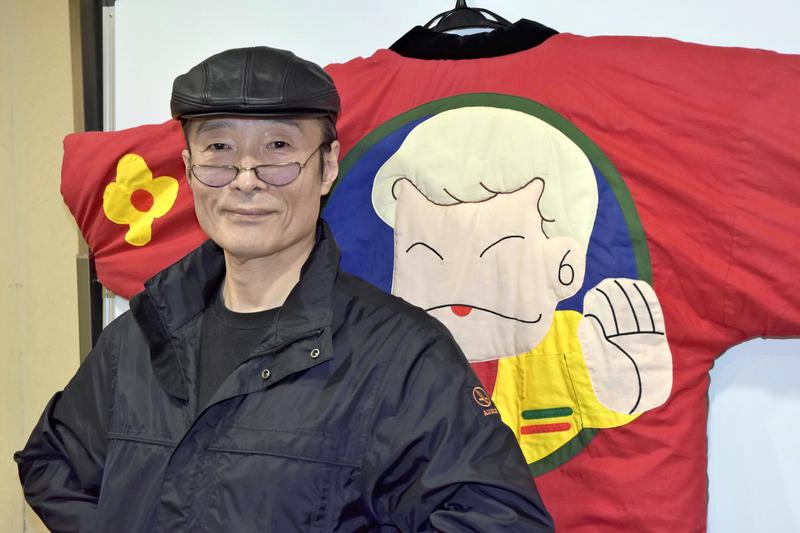
Some time after Mineo Maya, then in his late 20s, began drawing "Patalliro!" in 1978, he noticed that one of his assistants had started a strange dance behind him as he worked at his desk.
The assistant was also singing, "Who killed cock robin?" in Japanese.
This phrase from a British nursery rhyme was familiar to manga fans at the time, as it was used as a motif in a critically acclaimed episode of "Poe no Ichizoku" (The clan of Poe), a vampire fantasy manga by Moto Hagio.
"[The assistant] told me that the strange dance was performed by an amateur theater company formed by Hagio fans. I though it was funny and drew it in 'Patalliro!' where it oddly received a warm reception," said Maya, now 65, revealing the beginning of "Cock Robin Ondo" (Cock Robin dance song), the trademark gag song in the manga.
During the 1970s, Hagio, Keiko Takemiya and other manga artists started a major movement in manga -- they brought various innovative methods into the genre of shojo manga (manga for girls), such as the subtle depiction of the human psyche and the introduction of romantic homosexual love as themes.
"Patalliro!" is a popular manga with explosive gag scenes, with the shojo manga culture as its basis.
"Cock Robin Ondo" was the ending theme song for the TV anime version's 49-episode adaptation, which aired from 1982 to 1983. A feature-length anime film followed in 1983, and the work was adapted for theater in 2016 and 2018, starring Ryo Kato.
Maya seriously began his career as a manga artist when he was around 22, at a shojo manga magazine published by Hakusensha, Inc. In the early days, he also drew horror and yokai monster manga, although he couldn't gain much popularity among readers. One day, he came up with an idea for a suspense manga starring an Indian boy, but he struggled to create the story.
"Then I read a magazine at a bookshop, which included a manga with serious-looking characters doing funny things. I thought, 'This is it,'" he said.
He changed the Indian boy story into a comedy and created "Rashanu!," which turned out to be popular among manga artists, and paved the way for the birth of "Patalliro!"
"It was 'Patalliro!' that convinced me I wanted to draw comedies," he said.
Patalliro is a boy king who reigns over an island nation called Malynera, which enjoys a spring-like climate throughout the year. He annoys the people around him, such as British agent Maj. Bancoran, and causes outrageous trouble wherever he goes. In the first episode, which was supposed to be a one-off work, Patalliro was a side character to Bancoran.
From the second episode, the boy king emerged as the lead and quickly began displaying his peculiar personality. He has the brain of a genius, and is also greedy when it comes to money and has a cockroach-like survival ability.
"Patalliro rushes about on his own, even if I leave him alone. I'm like an automatic drawing machine that just records what he does, whereas in other works I tend to struggle depicting the lead characters, as they won't move on their own," Maya said.
His extreme sense of comedy probably comes from rakugo traditional comic storytelling -- Maya listened to rakugo on the radio from his childhood.
"But I hope people won't confuse me with Patalliro. I don't mind if they say I look like [good-looking] Bancoran, though," he said with a laugh.
"Patalliro!" freely changes the setting, from a period drama set in Japan during the Edo period (1603-1867) to a parallel universe. The work has grown into a long-running comedy, which is pretty rare in the genre of shojo manga. The compilation of the manga will reach its 100th volume this year, the 40th anniversary year for the work.
"I'll continue to draw it, even if I'm told to stop," Maya said. "To me, 'Patalliro!' is more like a hobby than work."
Read more from The Japan News at https://japannews.yomiuri.co.jp/







